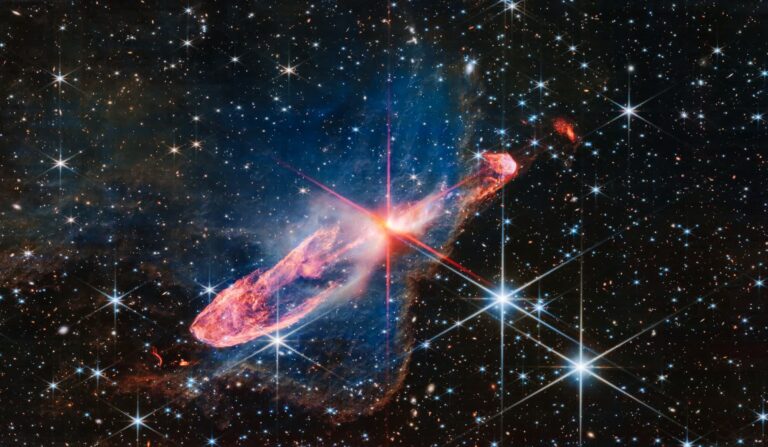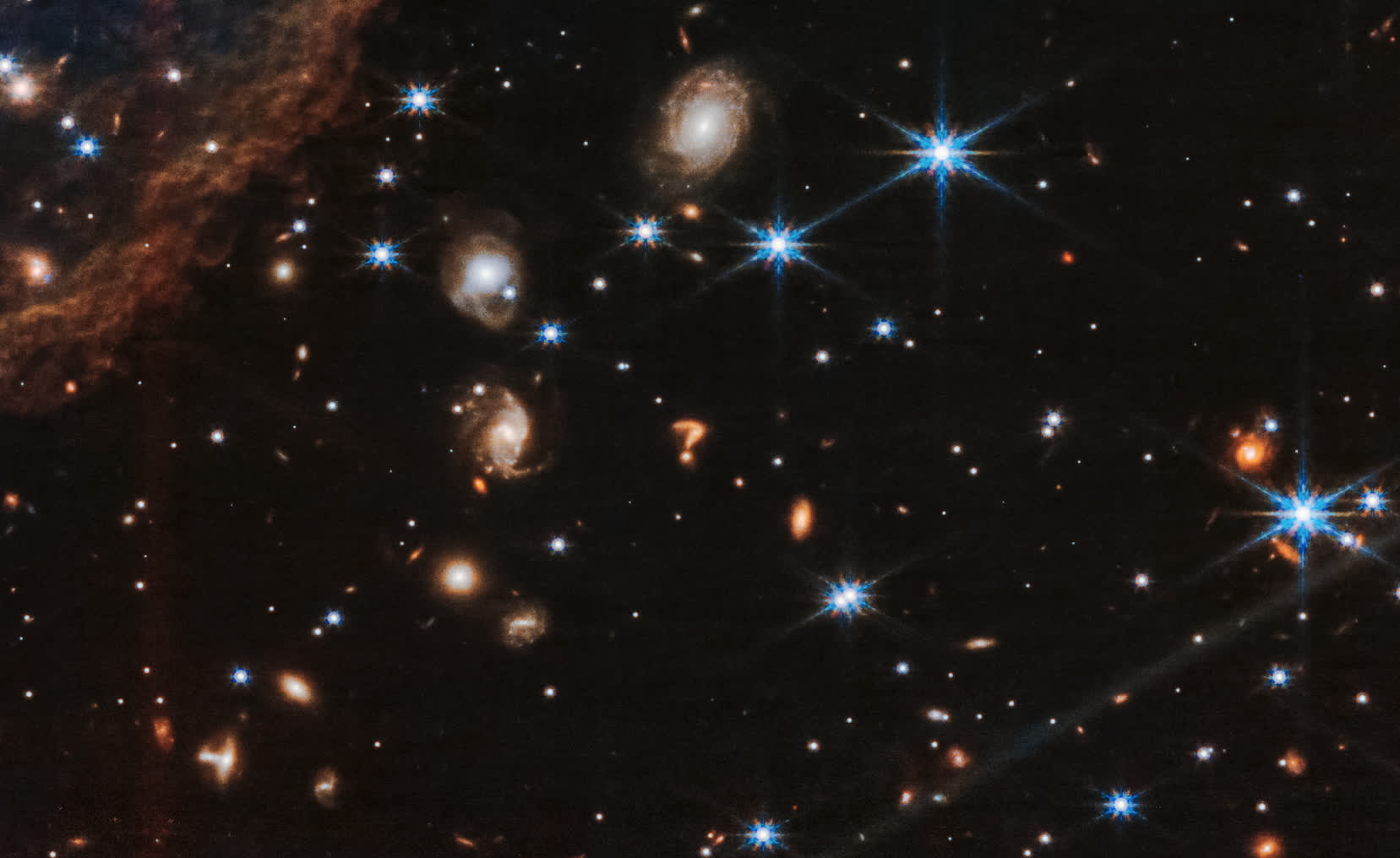
[ad_1]
In context: Since its launch a little over a year and a half ago, the James Webb Space Telescope has given astronomers, scientists, and the public unprecedented views of the distant universe. As NASA’s largest and most powerful telescope, JWTS can scan further than we have ever seen, sparking brand-new discoveries. But what is Batman’s Riddler doing out there?
Last week, Webb captured a brilliant image of Herbig-Haro 46/47 – a pair of newly forming stars only a few thousand years old. It’s a stunning photo in and of itself. However, this week a cosmic photobomber is stealing the show.
Herbig-Haro resides within the Milky Way galaxy and is about 1,470 light-years from Earth. In the scope of the universe, it is a very close neighbor. However, in the background are thousands of objects. Some would call them stars, but many are distant galaxies like our own, reduced to a pinpoint.

After thoroughly analyzing the high-resolution NIRCam (Near Infrared Camera) photo, scientists made a startling and somewhat puzzling discovery. Below and slightly to the right of Herbig-Haro’s nebula is a tiny orange smudge. A closer look at this object reveals that it forms a near perfectly oriented question mark (?).
Scientists have not confirmed what it is precisely, but they have a couple of solid working theories. Representatives from the Space Telescope Science Institute, responsible for managing Webb’s science operations, speculate that this cosmic question mark may be either a distant galaxy or a pair of interacting galaxies.
The latter seems on the mark. Simulations have shown that gravitational forces acting on colliding galaxies can scatter the stars, planets, and nebulae within them in spectacular and unpredictable ways (below). If this theory holds, the question mark will eventually deform as the two galaxies continue their death spiral around each other. However, this could take decades or even centuries to notice on the universal timeline.

Illinois State University Assistant Professor of Physics Matt Caplan believes the mark is likely two galaxies beginning to merge. He told Space.com that the curved upper object is possibly a sign that the larger galaxy is being “tidally disrupted.”
“The two distinct features could easily be merging galaxies in the background, with the upper part of the question mark being part of a larger galaxy getting tidally disrupted,” Caplan said. “Given the color of some of the other background galaxies, this doesn’t seem like the worst explanation. Despite how chaotic mergers are, double-lobed objects with curvy tails extending away from them are very typical.”
The other possibility is that we are looking at a standalone or two close but distinct non-interacting galaxies. If this is the case, the strange cosmic question mark could remain as it is for millions of years or longer. The only thing astronomers are sure of is that it is not one or more stars since it is missing the distinct refraction spikes typical of bright objects.
You can explore the full res image and see The Riddler’s logo on the James Webb website, but be warned the 14559 x 8481 pixel image can bog down and even crash less capable computers.
[ad_2]